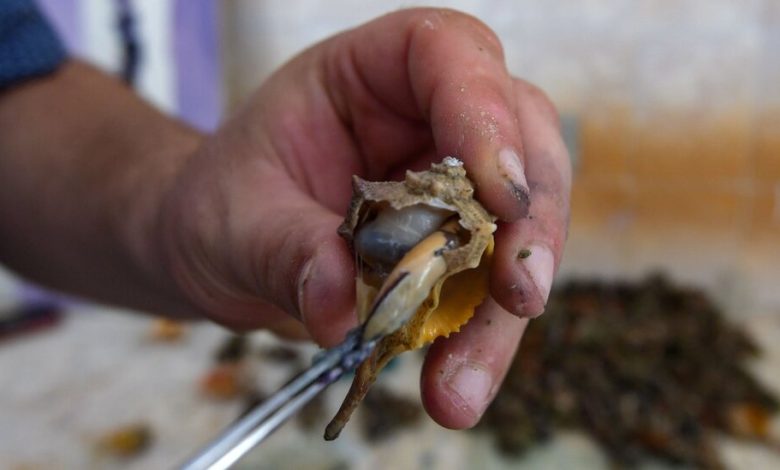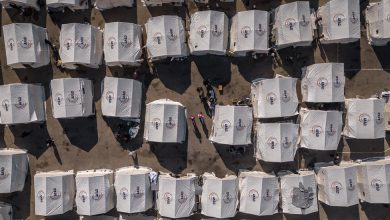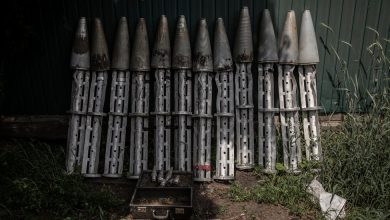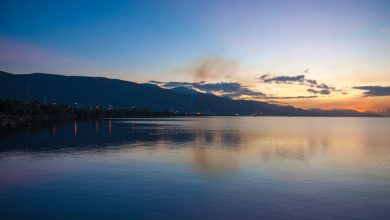This Ancient Factory Helped Purple Reign

The most prized pigment of antiquity was processed not from a tangle of root or the frothy extract of a weed, but by drawing out a slimy secretion from the mucus glands behind the anus of murex sea snails — “the bottom of the bottom-feeders,” the historian Kelly Grovier has written. The common name of the dyestuff, Tyrian purple, derives from the habitat of the mollusks, which the Phoenicians purportedly began harvesting in the 16th century B.C. in the city-state of Tyre in present-day Lebanon.
Because each snail yielded little more than a drop of the discharge — a clear, malodorous liquid — some 250,000 were required to produce an ounce of dye, by some accounts. Purple was labor-intensive, but so widely produced that piles of shells discarded millenniums ago are now geographical features in the region. The dye was also so pricey — worth more than three times its weight in gold, according to a Roman edict issued in 301 A.D. — that its use was reserved for priests, nobility and royalty. “Though purple may have symbolized a higher order, it reeked of a lower ordure,” Dr. Grovier writes in his book, “The Art of Colour.”
Where all this purple came from has long been a mystery. Just a few locations along the Levant’s southern coast and in Cyprus show evidence of dye-making at the start of the period, and all were on a modest scale. But a new study by researchers at the University of Haifa in Israel suggests that through most of the Iron Age biblical era, from roughly 1150 B.C. to 600 B.C., a small promontory called Tel Shiqmona on Israel’s Carmel coast was not a residential settlement, as previously supposed, but a major purple-dying factory.
“Tel Shiqmona fills in this gap with continuous production, most of the time in massive quantities,” said Golan Shalvi, a postdoctoral student in archaeology at the University of Chicago and the lead author of the paper. “For the majority of the Iron Age, it is the only site where manufacturing can be demonstrated with certainty.”
Aaron Schmitt, an expert on Phoenician culture who teaches archaeology at the Heidelberg University in Germany and who was not involved with the project, hailed the study for shedding new light on the neglected ruins. “To find a site that really specialized in this economic branch is highly significant and special,” he said.




